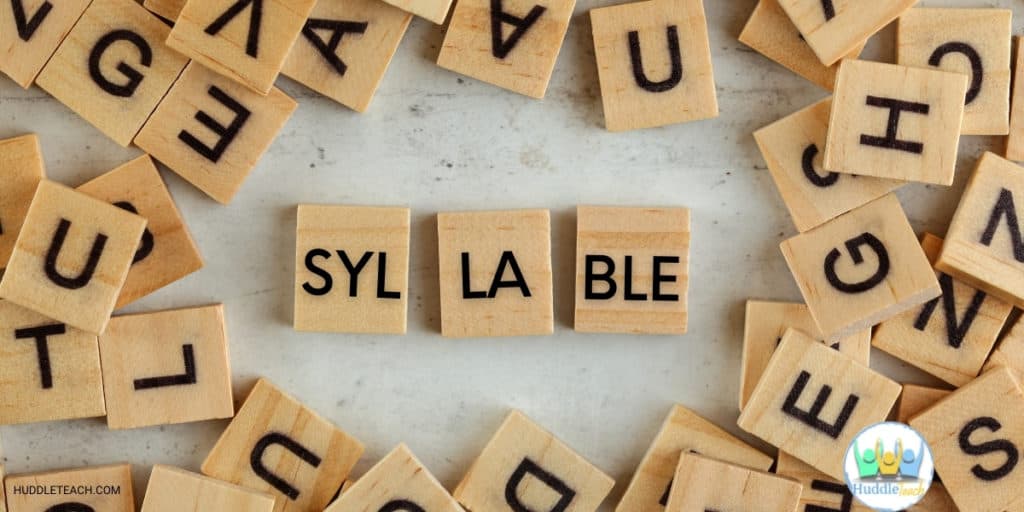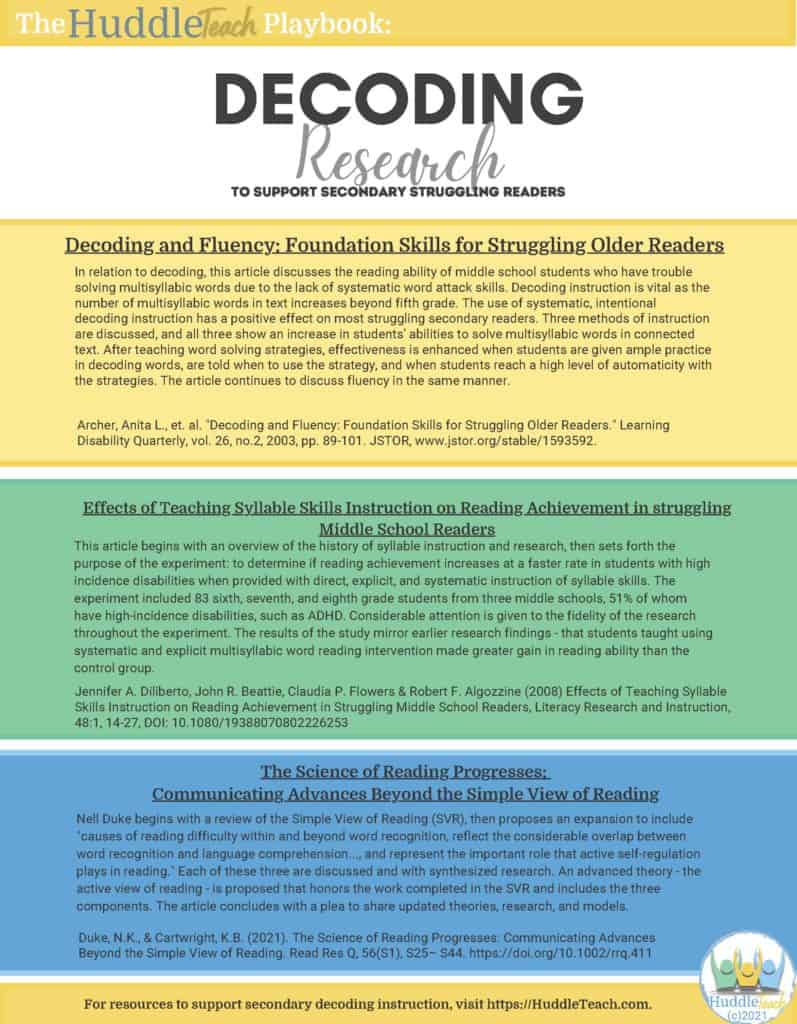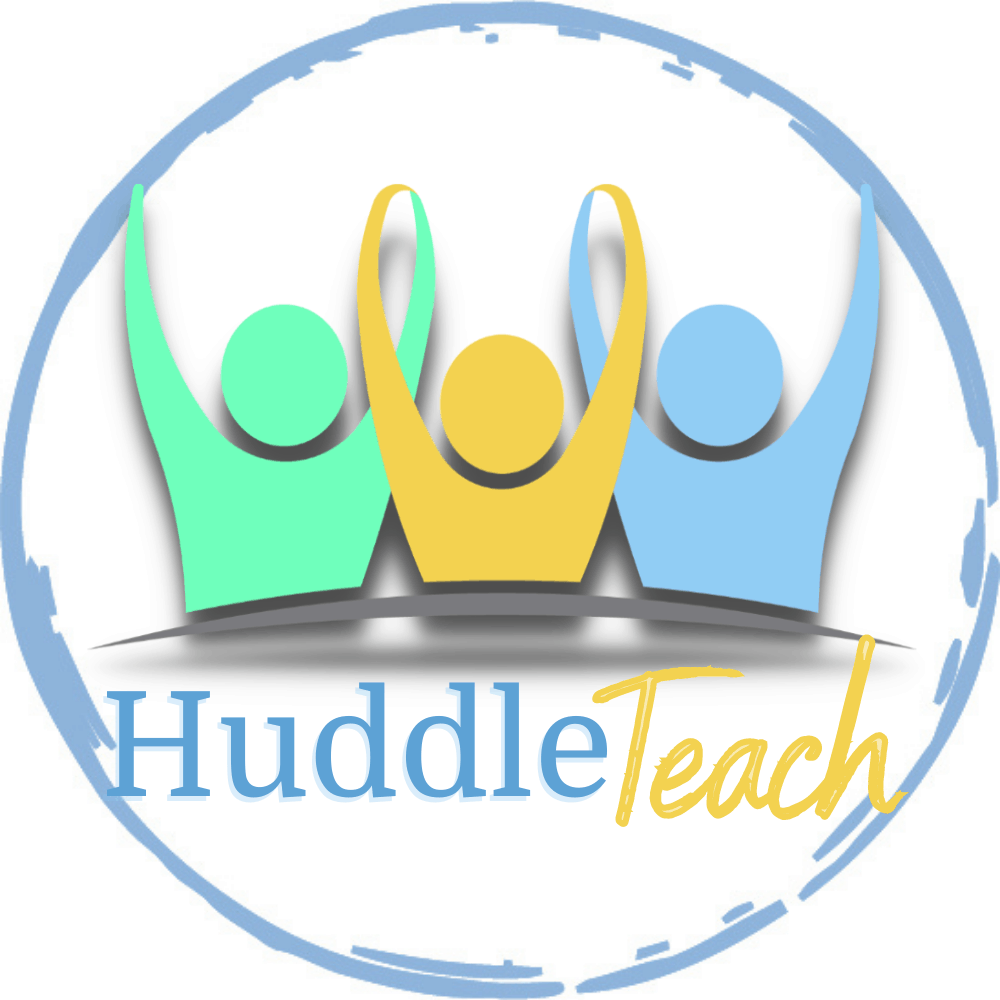Support for Syllable Instruction and Next Steps in Secondary Reading Interventions
While primary teachers continue to struggle with the best way to teach young students how to read, crickets tend to echo in the middle and high school intervention classrooms around this topic. Decoding research for older students is much scarcer than for younger students. If you work with secondary struggling readers, here are some important research and journal articles that support syllable instruction and expand the understanding of what comes next.

From fifth grade on, it is estimated that the average student encounters approximately 10,000 words per year that they have never previously encountered in print (Nagy & Anderson, 1984). Most of these new words are multisyllabic words.
A. Archer, M. M. Gleason, & V. L. Vachon, 2003
Decoding and Fluency: Foundational Skills For Struggling Older Readers
Anita L. Archer, Mary M. Gleason, and Vicky L. Vachon, 2003
While 74% of students identified with reading disabilities in third grade continue to have significant reading challenges in ninth grade (Lyon, 1995), there are encouraging findings. In fact, studies show intentional and systematic instruction has powerful positive effects on students’ reading achievement. This journal article details results from the research and discusses three easy-to-implement word chunking methods for an intervention classroom. All three methods show an increase in students’ abilities to solve multisyllabic words in connected text.

Effects of Teaching Syllable Skills Instruction on Reading Achievement in Struggling Middle School Readers
Jennifer A. Diliberto, John R. Beattie, Claudia P. Flowers, Robert F. Algozzine, 2009
This study used a control group and pre/post testing. The results show a greater gain in all areas (word identification, word attack, reading comprehension, and fluency) after instruction that included systematic syllable lessons. Word attack skills showed the greatest gains, and the fluency gap between the control and treated groups narrowed considerably. Read more about Jennifer Diliberto and her quest to help students read on the UNC site: https://ed.unc.edu/people/jennifer-a-diliberto/.

Attention to these bridging factors [executive functioning, motivation, fluency, vocabulary] may be necessary for word recognition and language comprehension interventions to be sufficiently effective for developing readers…
Nell K. Duke, 2021
The Science of Reading Progresses: Communicating Advances Beyond the Simple View of Reading
Nell K. Duke and Kelly B. Cartwright, 2021
With every swing of the pendulum, research accumulates on reading instruction best practices. This is true for both sides of the reading wars. This article sets forth the next steps in reading instruction. It recognizes the importance of phonics and decoding, but supports the idea that reading is more than word-solving. It humbly points to expanding conditions, such as executive functioning, vocabulary, and fluency as bridges between decoding and understanding. Of particular note for teachers of struggling secondary students is the information regarding readers who can decode, yet cannot understand text.
More Information to Partner with Decoding Research
In support of the concept of “swinging back to move forward,” this article from Inside Higher Ed – The Extensive Evidence of Co-Requisite Remediation’s Effectiveness – may be of particular interest to our high school instructors. (Read this blog post for more information.)
As we work with secondary teachers of all contents, two additional readings are beneficial:
- Who’s Really Struggling?: Middle School Teachers’ Perceptions of Struggling Readers involves case studies of secondary teachers who are unsure of why students are struggling and are naïve about how to help students learn decoding skills.
- Using Morphological Strategies to Help Adolescents Decode, Spell, and Comprehend Big Words in Science explains the importance of and a few strategies for bringing decoding research (as affixes and roots) into the science classroom.
Need to share decoding research? Download a free copy using the button below:

Finally, I have a plea to journal owners of research. It seems as though there should be a rule made about making research available to classroom teachers, literacy coaches, and curriculum coordinators. This is especially true for research that moves the field forward or that is more than five years old. (A special thank you to Nell Duke and International Literacy Association for open access to her article and journals analyzing the Science of Reading approach.) Currently, many research articles are only available to students and faculty of colleges and universities. If we want instruction to respond to research and not to rumor or fads created by soundbites, teachers should have quick and easy access to this information.
What are your go-to research studies for working with struggling adolescent readers? Feel free to share below in the comments!

